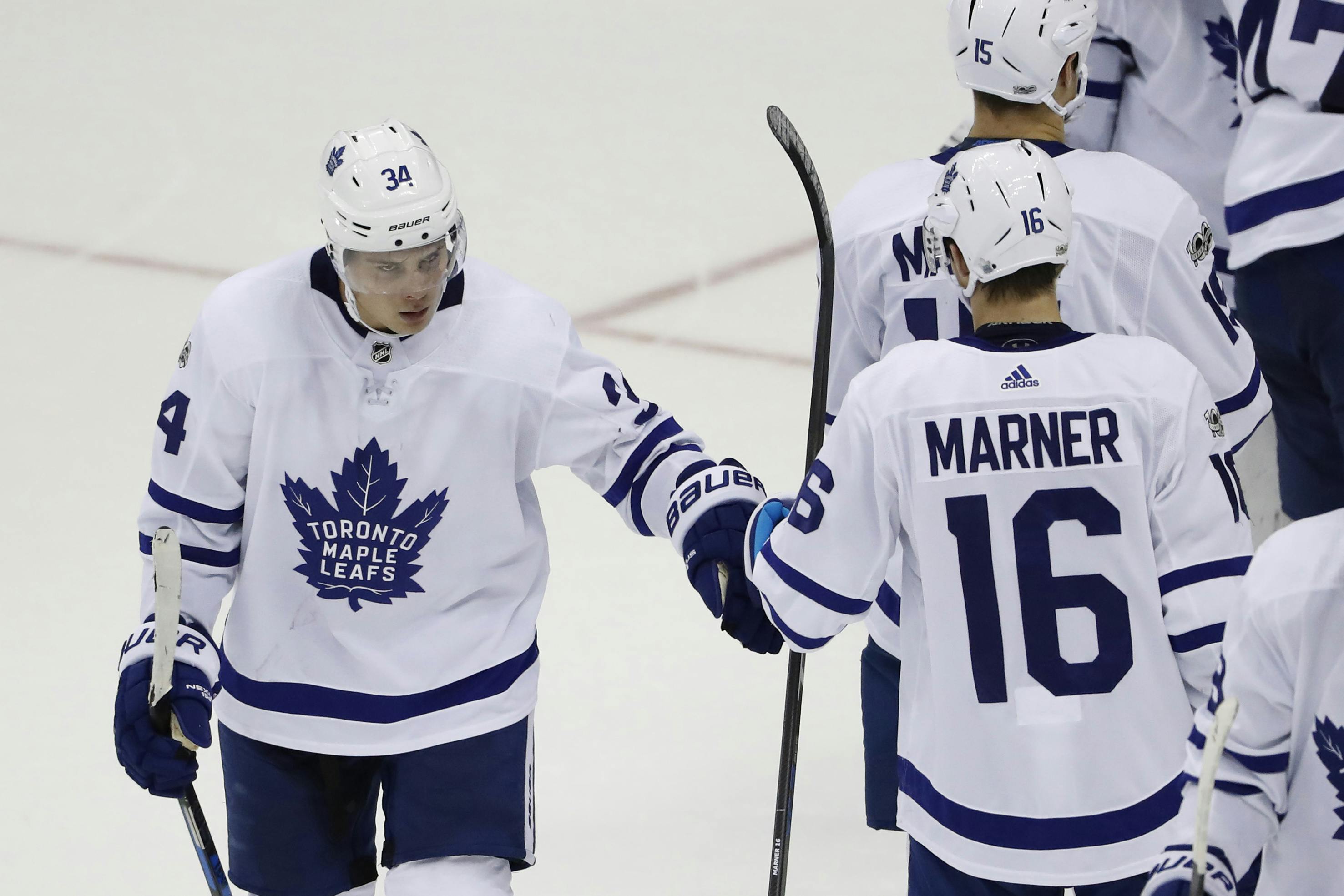Auston Matthews needs more ice time

By Ryan Fancey
5 years agoIt might seem weird to suggest that, after adding another top-ten centre to their roster, the Leafs should try to find more ice for the one they already had, but that’s what Mike Babcock needs to do as Auston Matthews heads into his third NHL season.
There’s been some “chatter” around the supposed Babcock-Matthews rift that ice time and usage were part of what Auston was ticked about as the season came to a close. Whether or not that’s true, Matthews would sort of have a point regardless. Over the last two seasons, despite being easily the Leafs’ most dangerous player (and arguably the best pure offensive threat in the league at even-strength), Matthews hasn’t had a particularly heavy workload. In his rookie season he notched 40 while only playing 17:38 a night on average, and this past season that number climbed up a little to 18:08. In those seasons, his average time on the powerplay has been 2:27 and (a surprising decrease to) 2:09, respectively.
I went back to see how other superstar centers who broke into the league right away fared in their second and third seasons ice-time-wise, and unsurprisingly, they were leaned on heavily from the outset. If Matthews feels he isn’t getting out there enough, he’s got a good case.
| AVG Ice Time (2nd Season) | AVG Ice Time (3rd Season) | |
| Sidney Crosby | 20:46 | 20:51 |
| Evgeni Malkin | 21:19 | 22:31 |
| Anze Kopitar | 20:41 | 20:27 |
| John Tavares | 19:15 | 20:34 |
| Steven Stamkos | 20:33 | 20:12 |
| Jonathan Toews | 18:38 | 20:00 |
| Connor McDavid | 21:08 | 21:33 |
Now, obviously you’d think situation has to be factored in huge here. A team thin on centers might lean on their guy too much. But the Penguins kind of break that mold. In Malkin’s third season, where his workload got real heavy, he notched 113 points and won the Conn Smythe with Sid on the roster. Pittsburgh managed to get Jordan Staal 19:51 per game that year as well, so there goes that narrative.
And this is sort of where the Leafs find themselves now; in a place quite comparable to that 2008-09 Penguins team in terms of center depth. Two monsters in Matthews/Tavares (Crosby/Malkin) and what would be a fantastic second-line center on any other team in Kadri (Staal). With how this fits together, it really appears the Leafs’ modus operandi next season would be to essentially run three lines and have an AHL/NHL tweener plug in for 5-6 minutes a night. John Tavares has averaged over 20 minutes a game for his entire career, Matthews obviously needs to get there too, and I doubt Kadri wants to become a 12-minute a night player, no matter how excited he is to have all these good teammates.
To go back to powerplay time quickly, I mentioned Auston didn’t see as much as we’d expect. But that’s because the Leafs keep things pretty balanced there, with everyone who plays the man-advantage regularly getting somewhere between 2:05-2:30 per game. But there’s room to perhaps load up more there and go star-heavy on PP1, getting guys like Matthews and Marner up over 3-minutes, and keeping Tavares there (he averaged 3:10 last year). The quick rebuttal to this would be “Why mess with a good thing? Toronto’s powerplay converted a ton last year” and that’s true. But the best powerplay in the league was Pittsburgh’s, which managed to get four guys out there (Malkin, Hornqvist, Kessel, and Crosby) for more than 3:30 a night. Balancing the talent across two units is nice, and has worked for the Leafs over the last couple seasons, but you don’t have to worry about the second unit converting if the first one always beats them to it.
Recent articles from Ryan Fancey





